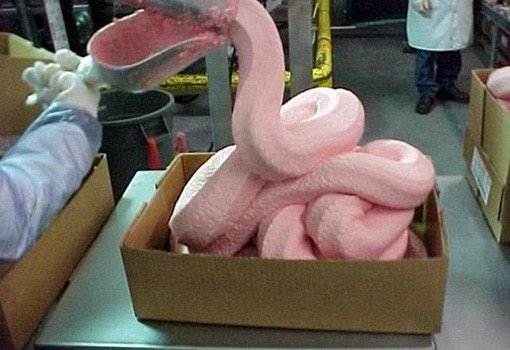
Even most vegetarians we know — well, the fun vegetarians, anyway — admit that while they don’t eat steak, they remember loving a good steak. Which makes sense, since steak, when cooked correctly, is delicious. Yet aside from knowing we like it and knowing what animal the meat comes from — unicorns — a lot of men don’t know much else about it. In order to find out what men should know about steak, we did some actual research and spoke to butcher Joe Lucas, meat supervisor for specialty food retailer Straub Markets.
#1: We Eat a Lot of Meat
As a nation, the United States consumes 26.4 billion lbs. of meat a year, which adds up to about 85 lbs. of meat per person. (“USA! USA! USA!” right? Wrong — people in Luxembourg actually consume more meat per capita than we do.) “There are two reasons why Americans eat so much,” Lucas explains. “We have more money to spend on beef, and it’s cheaper here than most other places in the world.” So with a little determination and plenty of Crestor, we should eventually be able to claim the title of No. 1 meat eaters. You hear that, Luxembourg? We’re coming for you.
#2: Cooked Steak Feels Like Your Hand
If you want to know how done a steak is on the grill, you can use a steak thermometer, or you can use your big mitt. Open up your hand (keep it relaxed, however) with your palm facing up. Now, use your index finger on your other hand to poke the fleshy area below your thumb. That’s what rare steak feels like when poked on the grill (no, you won’t burn your finger, you baby). Poke the middle of your palm, and that’s what medium steak feels like. Poke the hard spot directly beneath your pinky, and that’s what well-done feels like.

#3: There’s No Such Thing As Kobe Beef In America
The U.S. doesn’t allow Japanese beef to be imported, which means that no matter what you read on fancy restaurant menus, there’s no such thing as Kobe beef in America. In fact, the trademark “Kobe Beef,” which is registered in Japan, is meaningless here. The result is that any restaurant can call pretty much any slab of cow “Kobe” and get away with it.
#4: New Cuts of Beef Are Still Being Discovered
Last May the world was introduced to the Vegas Strip, a 14 oz. cut of beef similar to a New York Strip. Other details about the cut — specifically, which part of the cow it comes from — are being withheld until a patent is granted.
#5: Beef Is Graded For Quality
The top three grades of meat are:
- Prime — Cattle are young and well fed, and there’s plenty of marbling (fine threads of fat running through the cut).
- Choice — It has less marbling than Prime, so it’s more prone to being overcooked.
- Select — Marbling is scarce, and you’ll almost certainly need to use a marinade if you want to avoid serving tough, dry meat.
If you’re watching your boyish figure and your main concern is leanness, these cuts are considered extra lean: eye of round roast/steak, sirloin tip side steak, top round roast/steak, bottom round roast/steak, and top sirloin steak.

#6: Pink Slime Looks Gross, But Is Perfectly Edible
Beef industry people call it lean, finely textured beef. The rest of the world calls it pink slime — scraps of beef trimmings and fat that’s whipped together and treated with ammonia. It looks and sounds pretty disgusting, but it’s not unsafe to consume; in fact, it’s probably a lot less bad for you than much of the processed food you routinely eat. Still, when ABC News reported last March that 70 percent of the ground beef sold in supermarkets contained pink slime, the fallout caused some food chains to quit buying it and many school lunch programs to stop using it.
#7: Steak Won’t Make You Sick
Remember when everyone thought they’d get Mad Cow Disease if they so much as smelled a hamburger? Well, there’s only been one reported incident of mad cow disease in the U.S. in the past six years. And while handling raw meat always brings with it the threat of food poisoning, it’s easily preventable. “You can virtually eliminate risk by bringing the outside of the steak to a minimum of 165 degrees; that’ll kill the bacteria,” Lucas explains. Fun fact: Assuming you haven’t left the steak on your back porch for three days, harmful bacteria is found only on the outside of the meat, not the inside.
#8: Texas is the King of Cattle
In the U.S., Texas leads the herd in cattle production, with about 5 million head. Other top beef-producing states: Missouri, Oklahoma, Nebraska, South Dakota, Kansas, and California.



